Sign In
CloseTetton lore Q&A by Snowskau
I'm finding it hard to get writing without prompts so I am going to open for Q&As regarding the "tetton universe". I've been meaning to do this for a while but since tumblr shat the bed I haven't been able to find an adequate alternative for online questions.
If you ask me anything about the world that tettons, kobolds, zeol etc. inhabit I will try to have an interesting answer.
Some pretext for you:
The universe is of grounded high fantasy. You may think of it as an upbeat power metal album or a comforting Ghibli adventure. "Current day" is an 1860s industrial age with magic, but you could just as well entertain a neolithic or post-scarcity age.
Being mageborn is extremely rare and significant. Societal customs vary greatly between species.
The planet--named Nihendall for the time being--is the third moon of a gas giant, and is divided into four quarters by titanic, intraversible ocean drains, and girdled by an outwards-facing ringworld, realms corresponding to the God-brothers Amhoran, Éodal, Phrygon, Szumuel, and their father Hemen, collectively known as Ur-Dynasts. Both structures are filled with spawling complexes of maintenance facilities, dungeons, and other miscellaneous mystical mechanics and their machine minders, having been created by the late Ur-Dynasts first some 240,000 years prior. Said Dynasts have not been around for roughly 58,000 years.
The human species has analogues for most ethnicities, excluding (for a lack of space) Central- and South-Asian, Pacific, and Russian folk (and the influence they might have had upon the others). Other twists include the Gaels dominating the Angles, and the eastern lands of East-Asians and Amerindians being the most advanced industrial societies of humanity. They inhabit the Éodal Quarter along with a species of meter-tall Ratlings, classified either as squirrel- or mouse-like, as well as decimeter-tall gnomes.
Dwarves have Sibir-, Russian-, and Pittsburgh-like cultures. In an ancient era, a culture of the vaguely Sibiric nomad surface dwarves were collectively transformed into hulking yak-minotaurs in what was supposed to be a prank. These species share the Phrygon Quarter.
Tettons and kobold inhabit the Amhoran quarter, dominated by the continent named Korinth. Tettons have developed into the ethnic distinctions of Andoan, Deriten, Ortoran, Phéren, Thuranid, as well as a lesser isolate of Andoa; Taūman. The kobolds come in the primary color distinctions of: Red ("Volcanic"), Blue ("Cave"), Green ("Forest"), Tan ("Desert"), and Pink ("Hill"). Kobold have a complicated relationship with tettonkind.
The last quarter is Szumuel, which is largely oceanic. On it's surface lives a species of man-sized monkeys, progenitors to human and dwarves, who are a funky bunch. Their kinds follow the geographic distinctions of mountain, forest and islander until I can come up with nations. The ocean is inhabited by a species of sapient sea-slugs who come in a dizzying variety of colors and patterns.
Dragons used to be the supreme life-forms of the world, though they never built any civilisations of their own. They nearly went extinct during their revolt against the Dynasts and spent the Exodus Era attempting to transcend on the ringworld. Those oldest ones who succeeded are referred to as the Celestial Serpents, and the dragons now act as counselors to mortals, ever fearful of returning to tyranny.
The Zeol were created by the Ur-Dynast brethren to serve as their eternal subjects. They're the grey-skinned Implins who have no sense of shame as a result of millennia spent trying to repupulate their species in the wake of the Draconic Revolt, within their own refuge of Endless Shores, a pocket realm of eternal twilight and supposedly endless expansion into the ocean horizon. Unfortunately, the timeflow of this realm was temporarily sabotaged for the attempted Reconquest by the Betrayers and so they've not had quite the time they hoped they would. Ur-Hemen now resides in it's center, having bound his essence to rescue the realm, partly on a principle of penance.
Journal Information
- Views:
- 1989
- Comments:
- 28
- Favorites:
- 6
- Rating:
- General
Comments
-
-

The last Dynast, Ur-Hemen, could tell you empirically that the planet assumed it's historic volume 3.9 billion years in the past and that he and his sons arrived exactly 243,763 years ago to restructure the system for their convenience. The oldest appreciable time to your average bumpkus would be the pre-Dynastic era of draconic legend but they should be cognisant of the classic or tribal civilisations that arose towards the end of their absence. Developed society is in the enlightened industrial period--middle Victorian, like. They have a lot of records at their exposal since the reintegration of the On-High and Exiles from the former Ur-Dominion. Only the Tettons and Dwarves have any post-neolithic ruins to show for themselves but they can appreciate their age.
-
-
-

What species? Agricultural, bronze, pre-reconquest, post-reconquest or modern era? Just among Tettons there's the Andoan cultural sphere, the Tauman, Ortoran, Thurano-phereid, and Anteran-Phereid, not counting isolate tribes who practice animism and local spirit patronage. You can kind of pick from this map what location might interest you.
Tettons in the enlighened age mostly aspire to the introspective buddhist-like doctrine of Hemen and the Ascendant Dragons but the practices concerning ancestor worship are still well alive. Thus pantheonic religions have survived in a manner owing to heroic figures and the few deities that turned out to be actual involved spirits. Kobolds kind of just follow along.
-
-
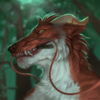
Who, if any of your species inhabit The Great Northern Sheet. Are the integrated into society or more isolated? Do they have unique culture from living what I assume is a cold and harsh environment?
-

What about music? Pls share some details about music and song and musical instruments for different species and cultures.
-

Kind of hard to answer, for the sheer amount of names I would have to come up with, which also necessitates deciding on grammar. I guess I'll just name similar instruments instead and worry about it later.
The most common instruments in Korinthan orchestration would be:
The Drum Company--nearly identical to modern Taiko. The concert-hall's centerpiece bi-facial barrel drum may have a diameter as large as an adult tetton. Most drum skins are of bull-yak hide and either riveted or tied on by adjustable strings. The various names translate as "Mighty Drum", "Wine Drum", "Patter Drum", "Bucket Drum", "Log Drum", "Bean Drum" and "Company Drum", the latter being a variety of forms in itself. Every culture has invented drums, but these are generally played in an Andoan fashion.
The Korinth Txalaparta--large xylophones. Played by a duo or company by beating planks with sticks. Usually wood, sometimes jade. Kobold in origin.
The Greathorn--like a didgeridoo or alphorn. It is carved out of a wood log or trunk (as in Phéren), or a mastodon horn (as in Andoa). It may feature pitch holes. One variety is curved in a loop for the convenience of the marching band.
Smaller horns with valves, much like oboes and clarinets. Wide variety.
The Bagpipe--Most have three drones since the 10th century. Twin chanters are rarely seen in orchestras. Thuranid in origin.
The Korinth Violin--considered either a large violin or a small cello. Four strings and an arrowhead-shaped box. Can be plucked rather than bowed. There's also the contrabass variety. May have resonant strings in the neck. Sound has a texture like a morin khuur.
Other common instruments unique to Korinth:
The Korinth Lute--four-stringed instrument with a teardrop-shaped wooden box. Apperared in the 9th century. Some varieties have the inner string running the side of the neck, to be gripped by the thumb, since tetton and kobold fingers are stubby. The Korinth Lutelet is played by kobold.
The Korinth Banjo--Four strings impinging on a square-shaped drum, the skin or fabric of which is fastened and tuned with a string. The inner string may end three quarters up the neck--like a large Shamisen with one extra string. Originally Andoan.
The Phéren Banjo--a three-stringed instrument whose resonance chamber is a gourd with faces cut out and covered by stretched hide of fabric--a two-chambered Shamisen.
A wide variety of woodwinds and recorders: Derit make ocarinas in the shape of songbirds. Ando often carve out horns. A twin-piped wood flute is found in Thuranos. Bone and ivory are common materials, otherwise wood is used.
The Bell Company is a line of large barrel-shaped musical bells beat with a hammer. Ortoran in origin.
If you count the throat as an instrument, Derit and Ando prominently perform Kargyraa. It is frequently used in orchestration.Tuvan singing is common throughout Andoa, particularly the steppe. City Andoa perform group singing like Mōteatea. Gherak An is a Phéren duo or group performance where singers alternately utter syllables in co-ordination to form an unbroken chorus.
Two songs may be considered the anthems of the Grand Federation: Glory/Hymn of The Union, and Might of Korinth. The former is performed purely by choir. Glory of The Union was penned by Tūrin Ečter-Meha in R.E. 134, later edited and expanded by the Törgil Philharmonic Society to reflect modern attitudes in R.E. 553. Might of Korinth presently utilises the Drum Company and Greathorns, sometimes with complementary wind instrumentation, and a beck-and-call chorus with female caller. It was originally performed as a warrior chant and victory march during the conclusion of the Reconquest.
Haven't really thought about the rest. Human and dwarven music is strongly similar to their respective culture sources.
-
-
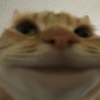
Perhaps a brief history of armed conflict there, some of its most notable points, or ways it compares and contrasts with the real world's? Is there much variation in how the different species have approached warfare?
-

Here are some paragraphs for you:
Because of the nature of their universe, nearly all conflict is asymmetric. Ancient wars were usually settled by having the mage-champions ritually duel, because not your army nor your fortress stands much of a chance against someone who can swallow them whole with an earthquake. Respectively, the mundane class usually solved the problem of mage-tyrants through assassination. Most commonly, though, civilisations were too busy fighting outside threats like megafauna, Ur-automata and elementals to devolve into infighting, recognising that they plainly have more in common, except during periods of ecological catastrophy like the Exodus Era(E.E.) year -3,097 failure of the Drambellogh Thermal Regulation Complex (one of the facilities constructed by the Ur-Dynasts some 240,000 years earlier to terraform and regulate the planet) which caused the practical rangarök and a collapse of the bronze-age surface civilisations of the Andoan and Phrygon quarters (tettons and dwarves, respectively). The empires that reformed between then and the reconquest generally had enough space within their geographic isolation that any warfare they saw were between them and inferior tribes or the various classes within their societies, be it arcane-mundane or ruling-subject. If one nation fought against another it would almost always be through the machinations of a mage; be it using their charisma or god-status, or psychic manipulation, and the conflict invariable ended upon their death, possibly devolving into insurgency against the foreign occupier. The only exceptions might be the dwarves, who occasionally waged wars over inheritance or asset acquisitions. The tettons were always deep into republican rule and the clans settle affairs privately.
Besides the powers of magic for flight, Wyverns were domesticated on Korinth around the fifth or sixth millennia before the current. They're not insignificant in battle. Golemancy was in a crude lithic stage at this point of imitating Ur-Guardians.
In E.E. -367 the rebel Zeol who had secretly escaped the pocket-realm refuge of Endless Shores--within which they had also trapped Hemen in E.E. ~38,000-- finally enacted their plans to reconquer the planet for the remaining caste of the Dynasts' bastard offspring; the ruling "Uru-Zeol", in the absence of the dragons who had defeated their masters some 58,000 years prior and exiled themselves to the girdle ring-world, the rebel Zeol having meanwhile spent the time constructing a virtually endless army of automata within the expanded subterranean world to ensure theoretic dominance even should the dragons return. This hidden planetary army then began conquering the surface races to impose the familiar old master-pet dynamic of the Imprisonment Era, and the peoples that would not be taken for slaves would flee through the hills and forests for the next three centuries, seeing little hope in contending with a practically endless onslaught of 4-meter-tall blaster-armed orichalcum battlebots. It took the dragons one-and-a-half centuries to finally decide on intervening--a monumental choice to end their self-imposed exile after fifty-five millennia.
Now, I want you to imagine this period as the lyrics to a power metal concept album. Battlemages riding divine dragons shooting laser-fire at warbots and grey devils and all that.
Again, obviously, success necessitated asymmetric warfare. Because no fight was equal against equal, the idea of an honorable battle in Korinth remains one which is won as swiftly and efficiently as possible. Retreat is not dishonorable. Sabotage is not dishonorable. Assassination is not dishonorable. That which destroys the enemy before they even know it, without destroying anyone or anything else, is supremely honorable.
The "Harrying Era" was a naturally formative experience for the species that had civilisations of which to experience utter defeat. The continent-wide migrations forced the former empires, including the god-beings and spirit-creatures, to interact and co-operate against a common foe. With the tetton proclivity towards a communal identity, the dragon's transcendentally wise counsel, and the introduction or invention of various communication, transportation, and production technologies, the Federation of Korinth--formerly the Imperial Union--has not fractured or suffered civil war in the 1,338 years since victory.
Unless you count the State having attempted to suppress and contain tribes and kingdoms that were not around for the Union, or forcefully exiling repeat convicts and secessionists to the separate landmass of Niven where they're free to have as many wars over land and identity as they like in freedom from Federal rule.
The dwarves, as mentioned, have conducted several wars largely over clan inheritance, assets, and historic slights. Surface dwarves are being driven underground by the worsening climate, becoming marginalised immigrant communities in the middle-floors of dwarven cities. Naturally, the dwarves have had the most frequent contact and contention with Ur-Automata and are likely the most adept in defeating both the Imprisonment Era Guardians and the Reconquest constructs through a combination of mineral and metal Alteration magics and their knowledge of the underground environment. As per your usual post-Tolkien fantasy they were probably the first to invent plate armor and gunpowder firearms.
Humans generally continue to have a reverent perception of warfare and conquest, having only achieved the Neolithic stage at the time of the Reconquest. Their societies--notably the Vrangr--are often lead monarchically by God-Mantled--some of whom are powerful enough to defeat dragons, giving them a profound boldness and rebellious attitude. Still, the prospect Empire got summarily humbled when they tried to conquer southern lands (having been spurred on by arctic ingress and Godly restlessness). The Magi lords of the Medjai tend to busy themselves with arcane pursuits rather than national aggrandisation and the patently Asian and Amerindian people of the eastern landmasses for whom I have no name(s) yet would be the most civilised and industrial nations of the Éodal quarter, identifying with Draconic philosophies.
The Apes(for which I also have no name) of the Szumuel quarter are in a largely similar state to Humans, struggling with attempting to force national identities onto growing societies. They, too, were never in a position to battle the Zeol Reconquest, and so the only strategic warfare they have known is between themselves or against the forces of the universe.
Nobody really knows about the Seaslug people, seeing as they live under the ocean and breathe water, but they'd probably have some legendary three-dimensional sea-battles to talk about.
The last warfare I should probably notate on is that of the ((Protectorate)) against interstellar arrivals. The dragons and ((Heme-Zeol)) of the On-High ringworld have since the end of the Imprisonment Era acted as guardians against cosmic threats such as more recent exiles from Grand Space, in aid and stead of the absent Ur-Hemen. The planet and ringworld are sprawling with stasis dungeons for this wide variety of space criminals collected over the long eras, and the terrestrial facilities don't have the best maintenance record in the absence of the last Ur-Dynast and Architect--who knows what-and-where seal is going to fail next. To this end they have shared several of their technologies; notably advanced golemancy, spellrune-matrixes, and translocation spheres with certain organisations in the Amhoran and Phryqon quarters. Almost every township there has a native-built orichalcum Sentinel now. You wouldn't dare register as a threat before an orichalcum Sentinel.-

Sounds like quite a complex web they're woven into. Between the mages, scary creatures/constructs, and the fact that they live in a sandbox belonging to greater beings, I bet that'd be pretty humbling for your average person there. Small fish in a big pond.
If you'd want more writing subjects, Tetton and Dwarven industry in the "current" year is something I'd be curious about seeing expanded on. Magic and the tech gifted by the Ur-Dynasts sound like some massive curveballs, especially if golems are as prevalent as it sounds.
It's perhaps more natural to wonder what advances Dwarves and Tettons would be making with the ancient knowledge and the magic at their disposal, but would the comforts and conveniences of it leave them with any blindspots within some area or field that you and I may take for granted (i.e materials science, electronics, mass production, etc.)? Necessity is the mother of invention, so if you're "skipping" steps, I imagine some things may get missed (or just happen much later).-

Orichalcum is a magically infused copper alloy with near miraculous properties that inherent to all technologies of Ur. It is extremely strong and light-weight with a range of properties according to treatment, and although it oxidizes (at a rate maybe twenty-seven times that of normal copper), extremely fine mechanisms seem unaffected. Unfortunately for mortals, it may only be created in a star forge. Mundane peoples have long attempted to imitate the metal and the observed uses--which is how the bronze age got started.
The On-High are extremely wary of revealing Dynast technological specifics since it's essentially like teaching the prerequisites to nuclear power and myriad kinds of magical doomsday devices. The many facilities critical to the operation of the planet's biosphere remain resolutely restricted to original custodial automata and the original Zeol of Hemen's ringworld--who at this point are arcane cyborgs--often make assignments personal. Although they prepared many contingency plans for reintroduction to the planet, the On-High tend not to want to intervene in the development of any other species, save for ensuring the mundane races' liberty to life and freedom from tyranny and all that--a very pivotal choice they made specifically for intervening against the Reconquest. So, when the Grand Federation decides to build another translocation node or install a sentinel in town, it is strictly in association with their ringworld minders. The On-High have an unknown but presumably significant number of agents who deftly and gracefully make sure no unwanted knowledge spreads beyond the intended circles. Most of the time the Mundane are left to their own devices, which is why they still have to rely on conventional, mundane sciences like steam power--also because industrial levels of arcane power is extremely costly (as immense quantities are needed for both planetary facilities and the ringworld). Negotiating for allowances of Dynast technologies can be a frustrating time and most authorities know not to sit idly waiting for hand-me-downs.
You might find a few mages make use of magic for housekeeping or farmwork but it's not the purview of commoners.
Another technology I could mention are the scrying orbs that basically work like live video calls (operated by a trained, mageborn specialist--most government offices have a special Orb Chamber).
There's also, technically, magic spaceships. Fancy yourself accomplished enough to be taken on a scholarly excursion to the third moon colony or the gas harvesting facility?-

Maybe a little something over the tools, art, contraptions, and other goods crafted by tettons and what sets their work apart from others. Could be some particular flair or aesthetic (e.g. Elves with flowing, natural, and elegant stuff or Asura with drab, bulky geometry given bright colored accents), a notable presence or absence of a specific material used (alchemical stuff, metals, chemicals/substances), or anything particularly novel.
-
-
-
-
-

I'm more of a sensory person; any expansion on the scents of tettons, along with their their fur and skin (depending on the areas)? Maybe something about their diets depending on where they are unless it's picky. Any descriptions on what they sound like that we can refer to best and imagine?
-

Tettons have a naturally gravely, resonant voice. Derit have such powerful voices you can feel their rumble.
A sound like a chuff is a commonly encountered consonant and is approximated with a voiced or unvoiced uvular trill, and notated in Latin with Řř
They do not laugh through abdominal spasms, but instead wheeze or whine. (or, if the joke wasn't funny enough, customarily blow through their teeth.)
Derit and Andoa have thick underfur--naturally, they brush a lot. Ortoran tetton have almost no mane while east Thuranid can grow them almost to their shoulders.
Tetton skin is a natural pale grey-tan with black pigmentation on exposed areas. An albino on the other hand would be pink.
I'm going to say they smell vaguely like cinnamon, since I like cinnamon.
-
-
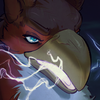
Have you put any thought into the vegetation/plantlife? I'd imagine a high-fantasy setting would have some alchemists/herbalists of some kind, but are there any notable herbs/plants in the setting? What do they do? How are they used? Are they commonly cultivated by everyday folk or is it more for the bourgeois? Any 'household staples'?
-

There's no shortage of flora that makes me feel like nature did all the work already... Nonetheless, there should be plenty plants with odd alchemical uses or other curious properties such as a basic intelligence like memory.
Arcanophores are organisms with patently arcane properties, or organisms containing levels of mana that far exceed normal saturation. Some examples I should compile later:
Firecrown is a flowering plant that can be found on the slopes of volcanoes throughout the Breddgadar province. It takes root in the wake of volcanic spatter, and blooms when subjected to high temperatures. It's brilliant red petals are arrowhead-shaped and arranged in concentrically, much like a rose. The petals of the Firecrown spontaneously combust when damaged, making it supremely hard to harvest. Being able to keep one in your garden is a matter of supreme prestige considering the risks and requirements.
Moonbell** or **Manabell is a plant with up to five bell-shaped blossoms having from it's central bud-stem, with a concentric fan of long- dagger-shaped leaves at it's base. The petals are pale blue or indigo in color, but can appear almost white in the flower's luminescence, which only blooms at night. The Riduviel variety has a dark purple tint to it's stem and the rim of the leaves, while the Endregan variety has a golden flower. Although one would assume the mana is concentrated in the flower, it is in fact the tuberous root which is the most potent part of the plant, and it is commonly used as a natural (albeit weak) mana-source. The plant is found in every quarter.
Chokereed is a type of perennial that is commonly found growing around large boulders throughout the Ciudlin mountains of the Szumuel quater. It's soft, moderately nutritious, sausage-like seed pod tastes very much like fudge--however, when flowering, the fine and very compact seeds burst into large balls of fluff when broken, hence the name.
-
-

I'd be cool to hear more about the different ethnicities of the Tetton. Sounds like they've got a few. Got five and a half in the OP listed, though I recall seeing "Dumir" starring on a couple of older ref sheets as well. I'm interested in hearing a little more about the different Tetton and what sets them apart from each other.
-

Andoa inhabit the namesake northern province and are differentiated by the caldera, steppe and highland geographies. They take pride in their martial tradition, and industrial prowess owing to the many notable rivers. Derit are intimately involved in Andoan and Federal culture as their imposing brawn is a significant asset. Because Derit are so different from other races, cross-breeds with smaller races may suffer congenital complications. They live otherwise nomadic lives in the arctic archipelago. Dumir is a vague distinction as central Korinth is vast, but denotes the Ortoran and Thuranid peoples. The Ortora are an isolate province to the far west and is one of the few ethnicities not carrying the dominant gene of a dark mask pattern that spread during the H.E.. Their physical characteristics are otherwise similar to Thuranid in having short fur, angular faces and large ears. Thuranos is a large and diverse province with jungles in the SW, a vast desert in the middle, and highlands and forests in the north and NE. Most of their civilisations orbit the Inland Seas and share a vast border with Phéren, and they continue to idolise an itinerant lifestyle. Pher are short, with rounded ears and noses, and a brimmed tail. Almost their entire province is tropical, with a vast river-plain culture in the west, greater valleys in the east where cities are lavishly carved into cliffsides, and many island chains in the SE, encircling the South Phéren Sea. Naturally, they have adapted to sea-faring. North of Phéren lies several steppe and plateau realms that are relatively sparsely inhabited but for mining settlements. The northmost province is an isolate of Old Andoa; Taūma, known mostly for temples and mage hermitages.
-

Apparently coming back to this exactly a year later, but it would be interesting to hear more about their sexual dimorphism and the general societal differences between the sexes.
You've got a couple of older ref sheets that point out some characteristics that like ears, eyes, fur patterns, and height that all would vary, but curious to know if there's more to be elaborated on.
Would their typical societal roles be something more familiar to us with females usually the masters of domestic affairs and males the one more focused on securing their family's lot in life, or would the distinction between the two be more blurred or flexible? Would something like female soldiers or men working in early childhood care/education be more commonplace? Is this something that would vary much between regions or ethnicities? For things with no clear IRL analogues like mageborns, how would things apply there?
-

Sexual dimorphism is tettons is low, with males and females having very nearly the same bone and muscle mass. Professions are less stigmatised by sex, but there are still implicit gender roles and law codes owing to the complications of maternity. Naturally, males are more likely to enroll in dangerous professions where endangering pregnant or nursing women is deemed irresponsible; a present mother is considered more important to a kit than a father. Tettons also undergo estrus in early winter so spheres like the military are still segregated by sex so to "preserve force readiness". Social dynamics are thus largely matriarchal as women have much more control over family as well as financial matters than in human societies.
Hirstorically, mageborn very much embodied and actualised the concept of a god-ruler. Their lethality and sometimes kratocratic succession dynamic often fostered fatalist cultures in their subjects while "lesser" mageborn were often ostracised into hermitage. Their power significantly waned as civilisation developed and the mundane populace invented means with which to check their power. By the H.E. they were instead celebrated heroes, pivotal in turning the Zeol Reconquest, and their power now thoroughly checked by a secret service backed by the overwhelming capability of the on-high and dragons; not to mention, the expectations placed upon them by developed society. Mageborn are almost oppressively scrutinized and pressured into important roles like healthcare or defensive forces. The vast majority of them still act on their sense of duty to the Federation and society, at the very least because they are compensated very well, but they do also probably appear disproportionately in migration statistics.
-
-
-
-

What does education look like here? Is a primary, secondary and post-secondary style system common?
What are average lifespans for both tetton and kobolds?
How well do the northern tettons handle the desert heat, or what methods have they found to cope with it?-

Citisens are enrolled in a municipal or certified citisen's school for 4 years at age six, where they are principally taught reading and writing, basic history, social conduct and essential survival and trade skills like knotwork, sowing, orientation, and gathering and cooking of food. Following, at age 10 or so, parents may elect to send their children to an academy for further education, a trade school usually organised by the respective guild or clan, or into apprenticeship under a master tradesman through private agreement. General academies are state-organised and offer tutoring in various subjects such as mathematics, history & philosophy, alchemy, engineering, which students are expected to specialise in after the two introductory years until attainment of certified degrees after 6-12 years. Citizens age 16 and up may also enter a Federal military academy which teaches more mechanical engineering. Any child that is confirmed mageborn through official examinations is immediately sent to an arcane academy where they are taught aptitude of their powers and attain knowledge and experience that is certain to provide them with a useful and honored place in society, even though they likely have to travel away from home and family for their studies.
Tetton lifespans are comparable to humans whereas kobolds may expire at 150. Life expectancy is about 50 for either, given mortality rates for the era.
Northerners do find the south rather hellish... Usually they shave their fur and either keep to the highlands or underground with kobolds.
-
-

I been curious what is the age range of a tetton ? When are they sexual Mature when are they socially mature at what age are they fully grown ? how old are the oldest Tettons ? how old do they do they get at average ?
-

Tettons mature a few years earlier than man and are capable of reaching 100, living just slightly faster. Average life expectancy within the Federation is 46 years. However, mageborn are commonly recorded attaining lifespans 130-400% that of normal, and godborn are capable of reincarnating with most of their psyche intact (something common in all species of mage- or godborn). If one becomes a lich or a soulbound construct, they can practically persist forever (in unlife). If you consider lichdom or soulbinding still "persisting", then, there are several tettons still present from the Harrying Era as what are essentially Ur-built cyborgs built of Orichalcum and crystal matrixes. The Federation inducts at least one new Titan per century and many mageborn or achieved scholars are elected for mechanical immortality by the On-High. (Are are members from every sapient species.)
There are also tomb guardians persisting from ancient history--their skulls (wherein the souls are bound) are hidden deep inside some tomb wall and their spectral forms patrol the catacombs while their mummified and fully kitted bodies are usually enshrined in the gallery. Although, that probably wouldn't count as living, since they are rarely interested (or capable) in holding a conversation. Souls bound to the mundane world still erode into simple or single-minded psyches over a few centuries at best. Tomb Guardianship has been continuously practiced throughout history.
-

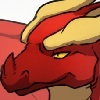
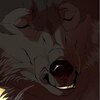
Link
Deuceswift
As far as the various inhabitants of the world are concerned, how long back does history of the world span, and do they all agree?